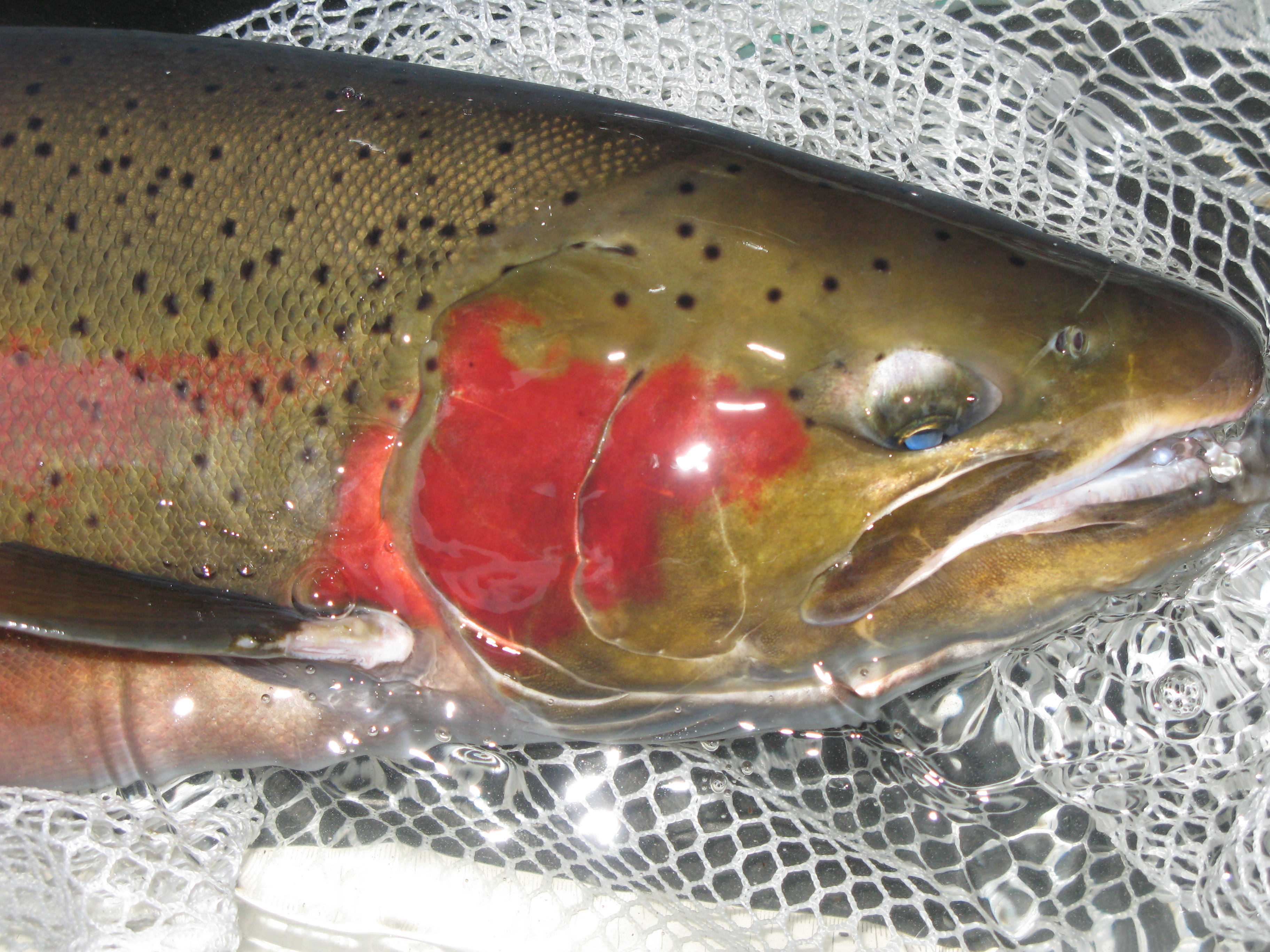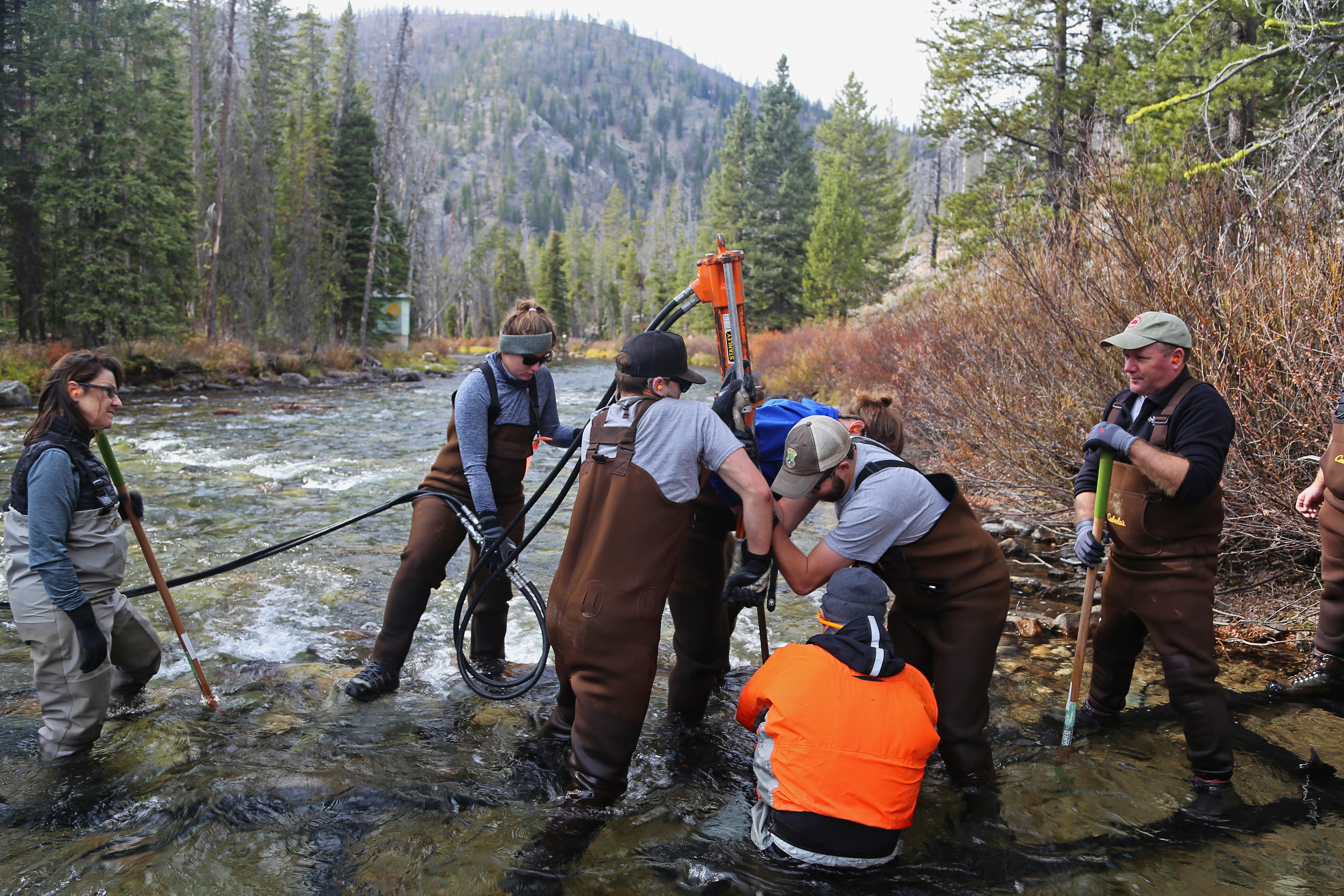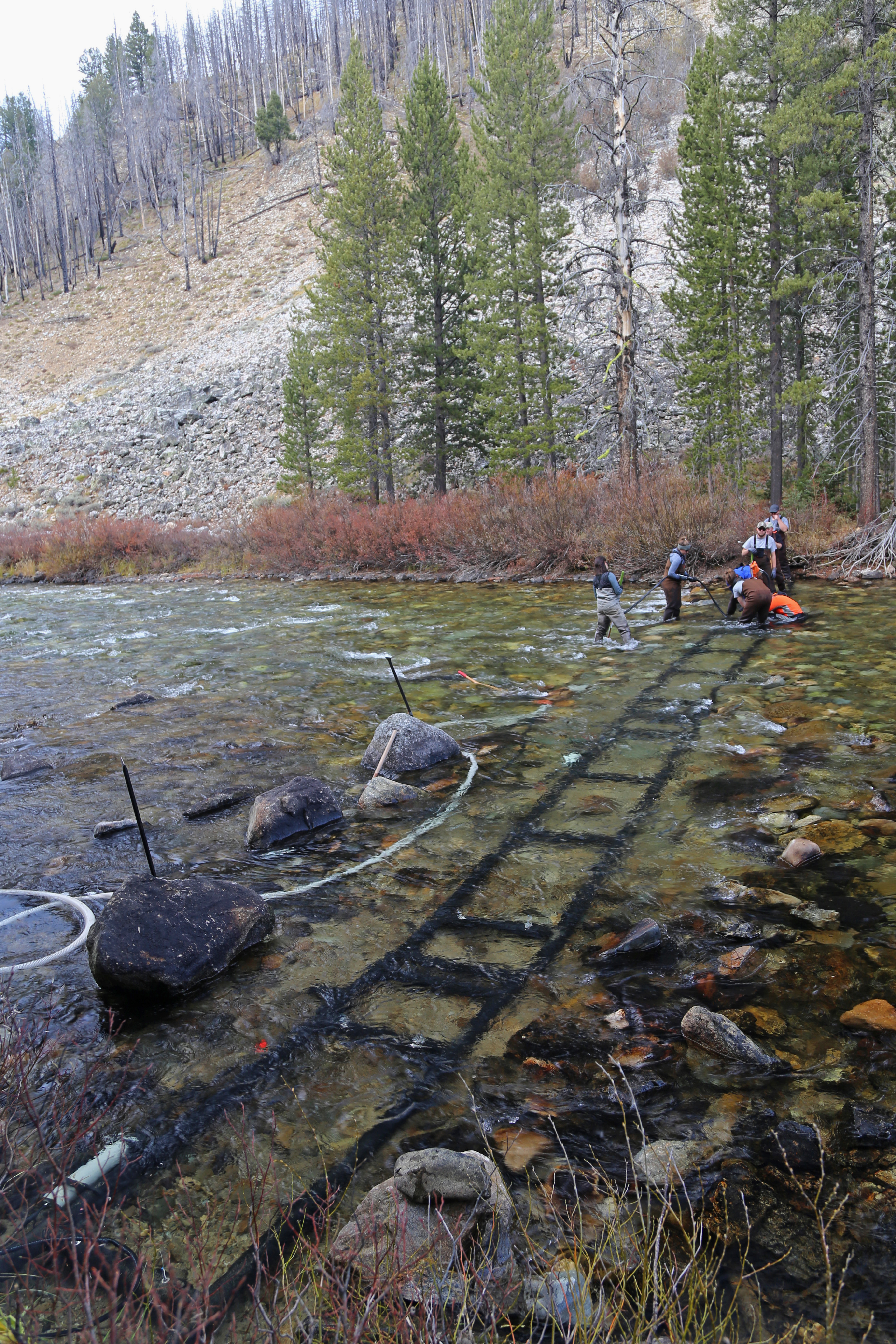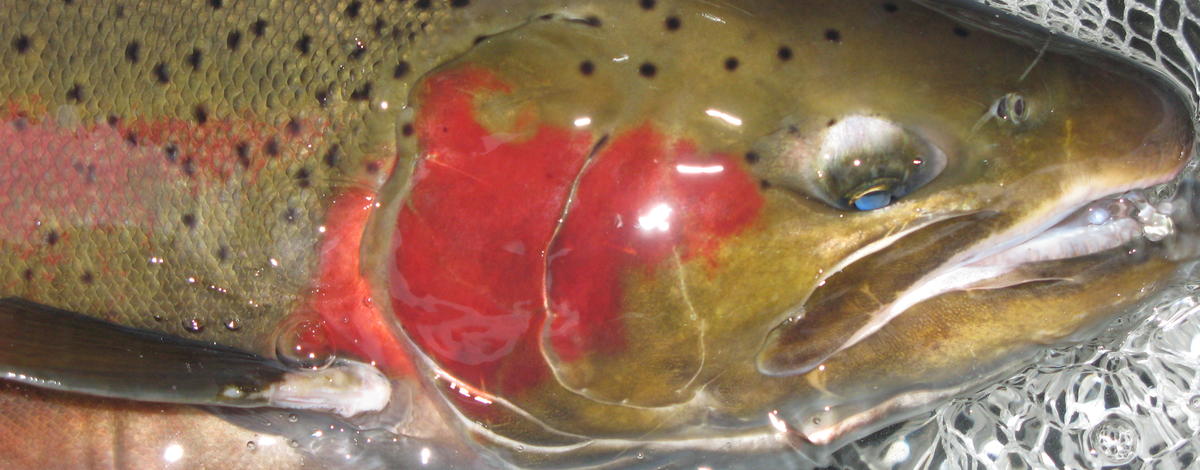Idaho Fish and Game's wild salmon and steelhead monitoring staff, with funding from Bonneville Power Administration, recently improved the department's wild steelhead monitoring infrastructure with a fish-detection system – called a PIT array – that was installed into Marsh Creek, which is a tributary to the Middle Fork Salmon River.
This adds another stream to the list of populations Fish and Game biologists intensively monitor for wild steelhead across the state. PIT arrays detect adults tagged with a Passive Integrated Transponder (PIT) tag, as these fish pass antenna spans buried in the stream bottom.

Wild Idaho Steelhead
Adult steelhead are especially difficult to count in their home streams because they spawn in the spring when stream flows are high and water is often murky. Spawning surveys, like those conducted for adult Chinook salmon, are not possible because steelhead are not visible in the spring, and weirs are often blown out with high flows. As technology has improved, PIT arrays have become crucial tools to estimate adult steelhead abundance at the tributary or population level.
PIT tags have long been used as an important tool for salmon and steelhead monitoring.
The Marsh Creek PIT array consists of an upstream and a downstream span of antennas, approximately 600 feet apart. To install, crews first dug a 6-inch trench across the stream channel, embedded the antennas into the substrate, then back-filled the antennas with the moved material.
Next, the antennas are anchored into the bottom of the river with duck-bill earth anchors, and connected in series. Then the system is connected to cables run overland to a central controller, which is linked to a satellite modem to transmit data remotely.

Fish and Game crew anchoring a PIT array antennae to the stream bottom.
Most wild adult steelhead detected at tributary arrays are PIT-tagged as adults as they passed Lower Granite Dam, which the fish pass through on their upstream migration through the Snake River. Some were also tagged as juveniles migrating downstream. While sampled at the dam, other information is collected including sex, length, age, and genetic stock.
When an individual fish is detected at a tributary array, not only can biologists estimate how many returned to a given tributary, but they can further describe what the population looks like from all the information they have on each fish.This helps us answer basic questions such as, “how many wild steelhead are there, how well are they surviving and reproducing?”
Idaho wild steelhead populations remain listed as threatened under the Endangered Species Act, and unfortunately, recent returns have continued to decline. Monitoring of Middle Fork Salmon River populations serves as a standard to which other populations can be compared, since these populations are mostly in wilderness, and their freshwater habitat remains largely un-impacted.
By understanding what steelhead do in the wild, Fish and Game biologists can better manage, protect and restore these fish and the many habitats they occupy. They are excited to add an additional monitoring tool to continue to assess status and trends in Idaho’s wild steelhead populations.

PIT tag array installed on Marsh Creek, a tributary to the Upper Middle Fork Salmon River.

